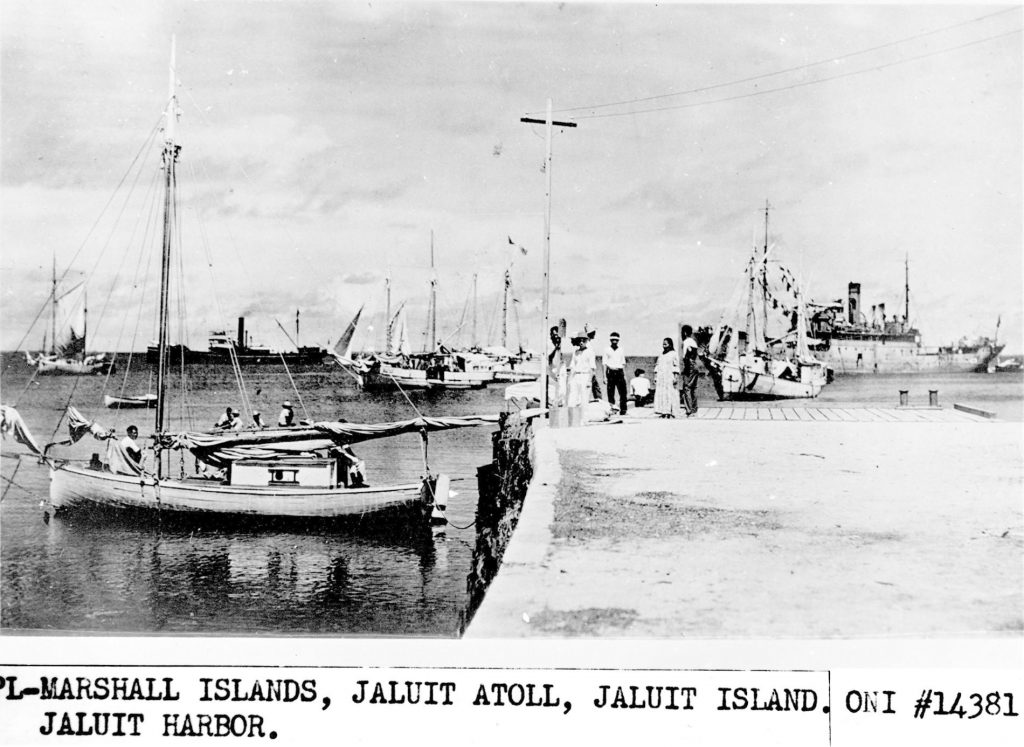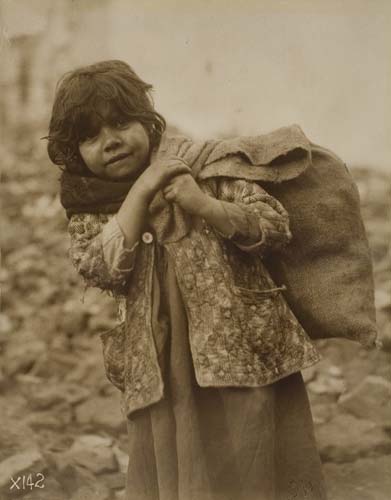Daile Kaplan on The Thrill of Photographic Discovery
With the recent NPR coverage questioning whether an anonymous photograph actually depicts Amelia Earhart on a wharf in Jaluit Atoll, photography’s role as historic evidence is once again in the news. According to legend, the famous aviatrix’s plane crash landed into the Pacific. With the discovery of this latest photograph, some believed she may have landed on the Marshall Islands in 1937, where she was rescued.

The photograph purporting to show Amelia Earhart in Jaluit Atoll. Courtesy of the U.S. National Archives.
The notion that photographic images convey layers of information is writ large in this latest story. Indeed the History Channel has relied on a single photograph, purportedly picturing Earhart strolling on a pier, to make their case regarding Earhart’s landing in the new documentary Amelia Earhart: The Lost Evidence. However, as NPR journalist Laurel Wamsley opines, “I think if you are shown this photograph, it would not necessarily occur to you that this is absolutely Amelia Earhart.” The photograph has since been debunked.
Photo detecting is an integral part of being an auction house specialist. But, for me, it holds special meaning. As a young arts administrator I was managing an archive containing 500,000 early twentieth-century photographs, among which was a cache of images depicting European refugees–mostly children–during the first World War. The pictures were great and clearly produced by the same photographer. Since I had just returned from living in Paris, my response was immediate: let’s discover who made the photographs and their purpose.

Lewis W. Hine, Gathering food from the dumps, Salonika, Macedonia (American Red Cross), sepia-toned silver print, 1918, printed 1920s-30s.
Sold February 14, 2007 for $4,560.
After a bit of lucky sleuthing, I was led to a huge room at the Library of Congress housing hundreds of thousands of photographs compiled by the American Red Cross. Because I was able to “crack the cataloging code,” I had located Lewis W. Hine‘s ‘lost’ photographs of ARC relief efforts in 1918-19. His poignant photographs were the topic of my first book, Lewis Hine in Europe, The ‘Lost’ Photographs. Moreover they transformed my identity from amateur scholar to (semi) mature curator.
The thrill of discovery is its own reward. But the idea that a photograph can reveal new truths is one that makes my heart beat faster.











![Grace Meschery-McCormack shares about two copies of Fernando de Rojas’s ‘La Célestine,’ including a limited edition copy illustrated by Pablo Picasso.
At auction April 22. Learn more about the works at the link in our bio.
#Rarebooks #rarebookdealer #antiquarianbooks #auctions
_______________________________________
Music Credit:
Schubert - Piano Quintet in A major ‘The Trout’, D. 667 - IV. Andantino – Allegretto
Music provided by Classical Music Copyright Free on Youtube [https://tinyurl.com/visit-cmcf]
Watch: • Schubert - Piano Quintet in A major ‘...]](https://scontent-iad3-1.cdninstagram.com/v/t51.75761-15/491443494_18499096345036585_5935932878956098058_n.jpg?stp=dst-jpg_e35_tt6&_nc_cat=107&ccb=7-5&_nc_sid=18de74&_nc_ohc=u_iWjSzBq6AQ7kNvwGP43px&_nc_oc=Adm2-RoP-ycffpqdlTNCCefFvNYdnM4Jbat2wE7WtBletQyey5mIGvoT4Ix2A95fVyg&_nc_zt=23&_nc_ht=scontent-iad3-1.cdninstagram.com&edm=AM6HXa8EAAAA&_nc_gid=4I9TtRdz9WcpnZCsuTW-Pg&oh=00_AfLF7Gf0jIGGH37ICWIip3sv_wjuPfH_T0RtB6uif4rJ3g&oe=681F8411)




